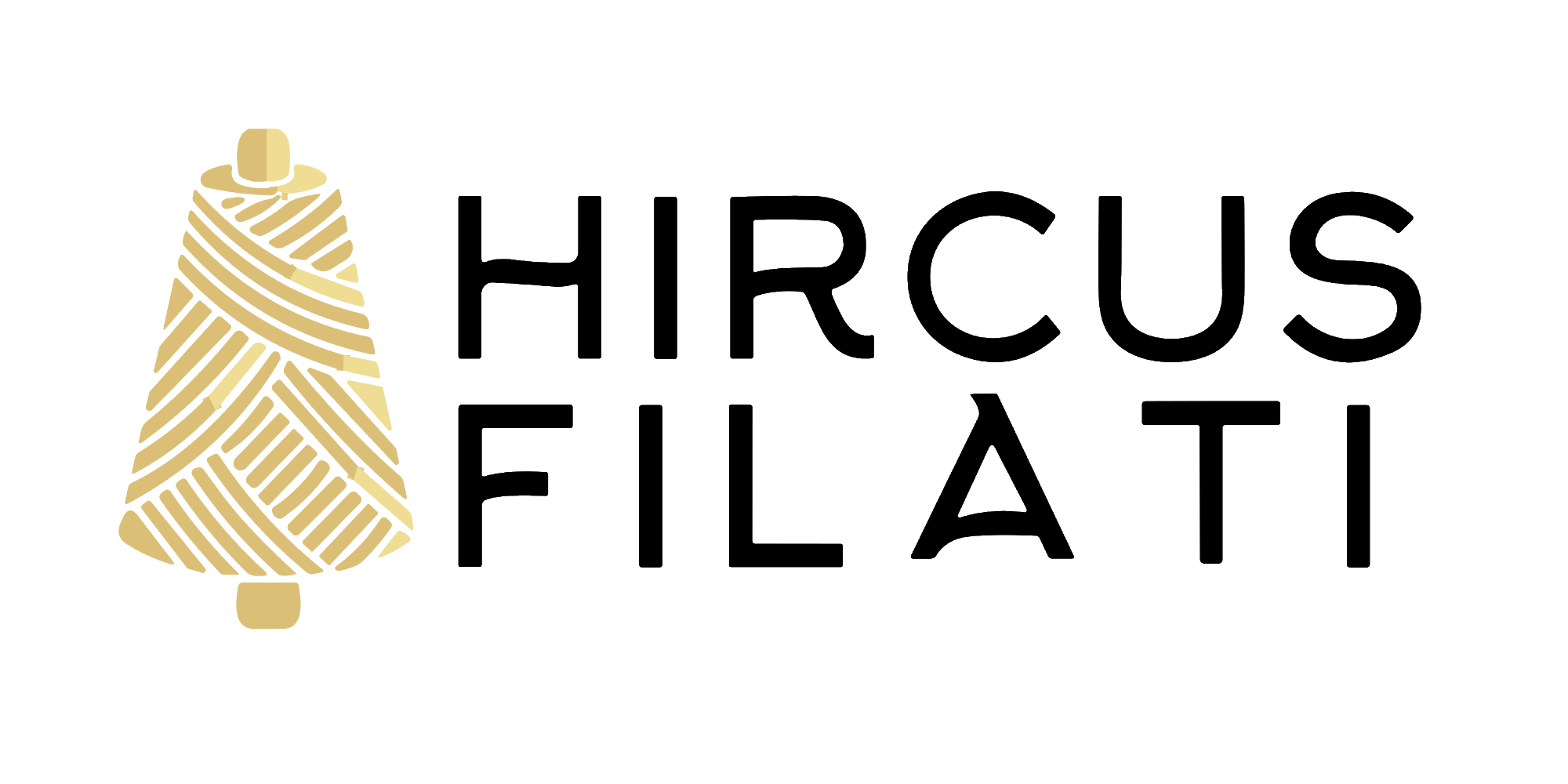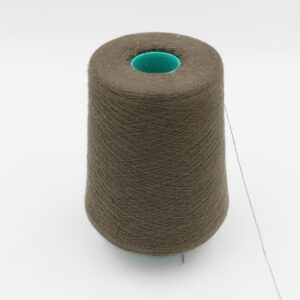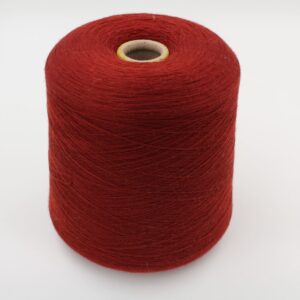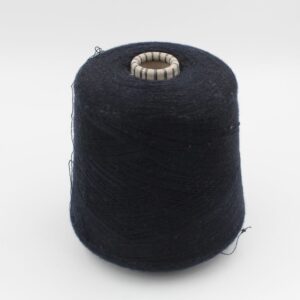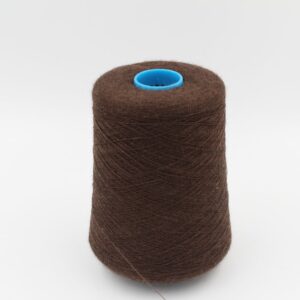All fibers
The Hircus Goat and the Cashmere
The Capra Hircus and the Cashmere
The “HIRCUS ENGAGRUS” goat descended from the “FALCONERI” goat is famous for the product obtained from its undercoat, called “tiflit” or “duvet” and is the famous cashmere goat.
The animals are of medium size, with a height at the withers around 60 centimeters and a weight that in males is about 60 kilos and in females 35. Small head, erect ears and well developed horns bent outwards than in adult males. become imposing.
Externally the animals produce a fleece with a long and coarse hair, but if you open it, we notice how underneath there is a very soft, soft and almost silky undercoat: the famous “duvet” that once worked will become the cashmere we know.
In May, during the moulting period, the shepherds gather their flocks to harvest the fiber. The goat is tied by joining the legs and once the animal is placed on a blanket, the shepherds move on to combing.
The operation takes place with combs similar to small rakes; they have sixteen hooks and pointed teeth. First a coarser comb is passed and then a finer one.
The animal is combed with energetic movements in all its parts, starting from the back to finish with the ears and legs.
The operation takes about thirty minutes for each animal. The product obtained is a mix of duvet and ordinary fur and is collected in makeshift sacks, generally made of
polypropylene or jute.
On average a “HIRCUS” goat yields 300-350 gr. in males, 200-250 gr.
in females and 400-450 gr. in castrati, but in exceptional cases it can yield 700 grams.
The lambs are combed for the first time only after the first year of life and the best quality of duvet is obtained up to the fourth year, in the following years the goat produces less and less duvet and of more ordinary quality. They are long-lived animals, in fact they live about fifteen, sixteen years and during their life the females give birth to four or five kids.
The wild yak lives on the Tibetan plateau, in the Pamir and in the foothills of the Himalayas, up to 6000 meters above sea level.
The slightly smaller domestic yak is used as a pack animal and provides leather, meat, milk and wool.
The fur of the younger specimens is used for clothing, while the long hair of the adult is used for weaving blankets and curtains.
The harsh winters, as well as the thermal excursions between one season and another, have caused the yak’s coat to grow warm and protective.
The outer layer, the “giarra”, is made up of longer and coarser hairs that are designed to protect the animal from the elements, while the underfleece, the layer closest to the skin, isolates the animal from the cold and keeps it warm. hot.
It is from this soft layer that the most precious fiber is obtained and used to make our yarns.
Each spring the thick fur of the yaks is carefully combed to collect the fiber and then trimmed. Only the belly and the lower part of the animal are combed while the neck, the back and the whole upper part are neglected. Each animal annually produces about 100 grams of hair which represents, by selling fiber, the only resource of the nomadic family to earn money. The fiber is stored in large bags and sent to collection centers and here sold to buyers and introduced into the production cycle that will lead it to become spun fiber.
Alpaca produces a shiny and silky natural fiber.
It is warmer than wool, and it is not prickly.
The fiber has a particular structure that helps protect from the cold and always keep the body heat and humidity constant.
Being devoid of the natural oily substance called lanolin (present in wool), the fiber does not cause allergic reactions. In fact, the alpaca, like all camelids, does not produce hair, but hair, very similar to our hair, and the alpaca garments must be washed with shampoo and hair conditioner, like our hair.
It also does not attract or retain dust.
The preparation, the carding, spinning, weaving and finishing processes are very similar to the process used for wool.
The finest Baby Alpaca is obtained from the first shearing of the young alpacas, when they are just one year old and is considered a noble fiber due to the particular properties and characteristics that distinguish it from other textile fibers present in nature.
Thanks to the fineness of the fiber (22.5 microns) the finished garment is extremely soft.
The fiber has a particular structure that helps protect from the cold and always keep the body heat and humidity constant.
The Camel appeared in North America 40/50 million years ago and is descended from an animal about the size of a small dog.
Two million years ago it migrated to Europe and Asia, becoming extinct in its homeland.
The Camelus is part of the Camelidae family which consists of two sub-species: the one-humped camel (Camelus dromedarius) and the two-humped one (Camelus bactrianus).
The one-humped camel or dromedary is found mainly in Africa, Arabia, the Middle East and, although rarely, in some locations in Asia. This provides a poor and ordinary fiber, not used by the manufacturing industry but used only
to make local products.
The two-humped or Bactrian camel is found in Mongolia, China, Kazakhstan, Uzbekistan, Afghanistan, Iran and is closely related to the rare wild camel known in Mongolia as “Khavtgai”.
The very soft hair is extracted from the baby of the Camel and is used to make our yarns.
The merino, or merinos, is a breed of sheep appreciated above all for its fleece, from which a very fine and precious wool is obtained.
Origin and history
Its origin is uncertain. Probably known in the Middle East already in ancient times, it would have passed into the Iberian Peninsula through Morocco in the Early Middle Ages. Certainly, the modern merino derives from a breed bred in Spain in the 12th century.
Spain itself, by law, maintained its exclusivity until the 17th century.
The first country to which Spain granted the merino sheep, at the beginning of the eighteenth century, was France, apparently following a donation between the respective sovereigns.
The industrial production of merino wool fabrics for suits had a strong impetus after World War II. Among the main
reasons, the need of the clergy who, evidently, must wear certain clothes in all seasons, even in summer.
In Australia the merino sheep was introduced at the beginning of the 19th century and found a particularly suitable environment thanks to the favorable climate and the availability of pastures.
Productive characters
Each specimen can produce up to 10 kg of very fine wool
Distribution
Almost half of the world’s merino wool production is estimated to come from Australia.
New Zealand is the country with the highest number of merino sheep in relation to the population: there are seventy million of them, compared to three and a half million inhabitants.
Today it is present in various parts of the world and it is estimated that almost half of the existing sheep belong to the merino breed.
There are many sub-races. An Australian bred subrace of merino, the merino poll, is hornless.
This type of wool is particularly sought after due to its fineness, dependent on the fact that the hair of a merino sheep is thinner than the hair of a common sheep. Generally, a hair with a diameter of 20 microns or less comes from a merino sheep.
This particular characteristic, added to the other qualities of common wool, make it a very valuable fiber, ideal for certain clothing packages, especially men’s clothes. A merino wool suit is in fact resistant to wear and crease like a common wool suit, but unlike this, being lighter, it can also be worn in the warmer seasons.
The fabric known as cool wool or “four-season wool” is generally made with merino wool.
Australian wool is assembled into bales and sold in traditional public auctions, attended by buyers from all over the world. The best bales, i.e. with the finest wool, are traditionally purchased from Italian wool mills
An aura of legend surrounds the discovery of silk and its diffusion, from the Far East to Europe.
Sericulture, the breeding of silkworms for the production of raw silk, is certainly a Chinese invention dating back to about 5000 years ago.
For the West, China itself has often been synonymous with silk, and the road from China to the west was known
as the “silk road”. The way through which, already two thousand years ago, silk, perfumes, spices and precious stones arrived in the Mediterranean from China.
The journey lasted one or more years, depending on the political and military conditions of the countries crossed. This path hasn’t changed much over the course of fifteen centuries.
It is said in a book of Confucius that the Chinese empress S-Ling-Chi discovered how to raise the silkworm and weave its slime, 2600 years before Christ and that the grateful people deified and worshiped her as “silk goddess” .
Jealously guarded in the recesses of the imperial court, silence enveloped the discovery for many centuries, and only in the fourth century. AD Japan and India became aware of it.
Another legend tells of the cunning of a Chinese princess who married the king of Turkestan who, in order not to give up her silk clothes, hid some eggs of the precious animal in her hair.
It was only later, in the sixth century after Christ, that the breeding of the silkworm could also be introduced in the Mediterranean countries.
Silk is a very valuable textile filament derived from the secretion of an insect called a silkworm.
The best known silkworm is the bombyx, a larva of the Bombyx mori moth, that is, mulberry bombice, belonging to the order of the Lepidoptera and to the family of the Bombicidae.
The complete life cycle of the insect lasts about 45 – 50 days and goes through the following stages: hatching, growth of the larvae
through the five ages, spinning of the cocoon, emergence of the butterflies, mating and deposition.
In spring, the eggs hatch when the mulberry begins to have leaves in the ideal maturity stage for feeding the newborn larvettes, that is, between the end of April and the beginning of May.
Upon hatching, the seeds whiten and the larvae are born, about 3 mm long.
When the eggs hatch, the farmer transfers the small worms onto horizontal racks covered with mulberry leaves; the larvae, about half a centimeter long, are small and dark, after ten days they acquire a whitish color.
Not all seeds produce the cocoon: on average 10% is lost due to the death of the embryo or larva.
The larvae are insatiable and voraciously feed on the leaves of the white mulberry “Morus alba”. To feed 28 grams of seeds, 1000 kg of leaves are needed.
Flax grown in Western Europe is known to be the best in the world.
This level of excellence is the result of the combination of three Beneficial factors: the availability of suitable soils, the favorable climatic conditions and the knowledge of expert liniculturists attentive to quality.
In the agricultural production sector, the specialists leave nothing to chance: the preparation of the land, the selection of varieties, the sowing and growth of flax, the control of the crop, the harvest by grubbing up and the maceration intended to favor the extraction of the fibers. These are all stages that require the same rigor and the same care.
With a strong tradition content but open to the progress of scientific and industrial research, this crop has always been practiced with respect for the environment.
